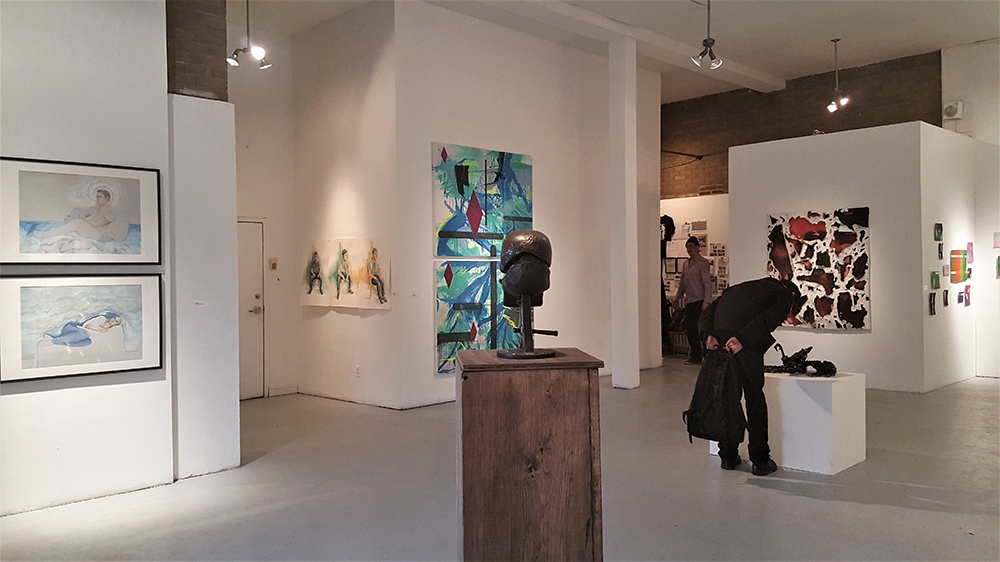Bernice Afriyie | Arts Editor
Featured image: Gallery 1313 hosts wide array of exhibits and artists. | Faria Nusrat
Ne touche pas, in case you didn’t understand the warning in English. It’s socially understood that the artworks on display at exhibits, galleries and museums are for visual consumption only and not to be touched. The multimedia showcase Ne Touche Pas brought together the larger-than-life, bold, experimental and quirky pieces that were definitely only there for the eyes. Nineteen talented visual arts students were featured in this exhibition with their works displayed at Gallery 1313 in Toronto between March 15 and 26.
Though Ne Touche Pas was an end-of-the-year juried exhibition, the student artists were selected from the open house exhibit of the same name that took place on March 8 at York. The open house was coordinated by professors Zeke Moores and Marc Couroux in collaboration with the Visual Art Student Association.
The selected works for Ne Touche Pas covered a spectrum of genres from print, sculpture, painting, drawing, time-based and photos. Each collection that comprised the exhibit had its own voice, yet they all worked in unison as they all, in some form or another, explored process and medium.
One such artist who achieved this feat with her sculptures was Malina Sintnicolaas. Her sculpting work focused on surface and texture and what can be achieved by layering images and meanings.
Her sculptures posed an interesting juxtaposition. Sintnicolaas captured delicate, earthy images with a harp and heavy material. It added contemporary interest to the age-old convention of artists sculpting nature because the audience is made hyper aware of the disconnect between subject matter and art piece.
The print works of Danny Cirne were also worth noting. Cirne’s pieces were composed simply and may not have been as compelling as the surreal paintings of Leah Borges, but with some consideration, the beauty of the prints revealed themselves; they were reductionist, dealing with shapes and colours. The abstract minimalism effectively employed form and colour to remove itself from realist work such as Sintnicolaas’ sculptures, but the openness of the prints almost made them relatable. It’s possible for two observers to regard one of Cirne’s prints and be reminded of vastly different things.
Both Sintnicolaas’ and Cirne’s works, in different ways, worked with the title of the exhibit Ne Touche Pas. The play on medium and subject matter in Sintnicolaas’ sculptures made us want to physically experience the contradiction. Cirne’s simple prints played with form and shape on a flat plane in place of physical shapes.
It may be that an observer’s desire to physically touch an artwork comes from a need to sensually connect with artwork. We can go to exhibits and see, hear and smell an installation, but actual physical contact between observer and artwork is limited. Ne Touche Pas, by insisting we do not touch, opened up a dialogue on how we can enter artworks in new ways.



I read your post and wished I’d writetn it